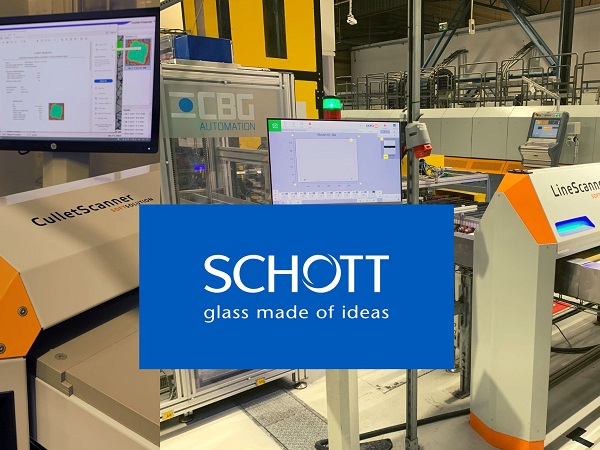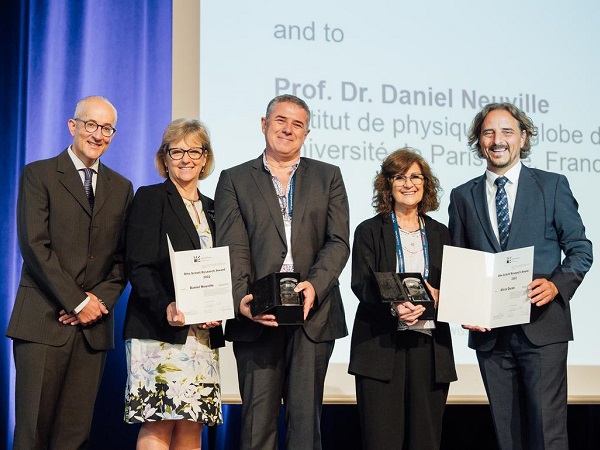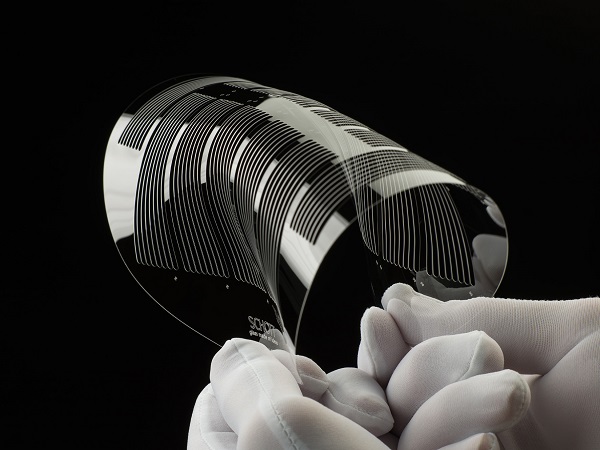Date: 13 November 2014
HermeS® glass substrates enable fully gastight and therefore long-term robust enclosures for MEMS devices.The fine pitched vias allow the reliable conduction of electrical signals and power into and out of the MEMS device. Since HermeS® glass can be placed directly under the silicon MEMS, it makes miniaturized, fully hermetic 3D Wafer Level Chip Size Packaging (WLCSP) possible. Thanks to the extremely high reliability, HermeS® wafer provides advantages in particular for MEMS devices used in industrial, medical and radio-frequency applications. SCHOTT will be presenting its wafers from November 11-14, 2014 at Electronica in Munich, Germany (Hall A3, Booth 339).
MEMS-powered devices and sensors are often exposed to extremely harsh environments, e.g. pressure sensors in corrosive industrial production lines. Nevertheless they must function perfectly over long periods of time. The reliability and performance of the MEMS device depends on the long-term robustness of the MEMS packaging technology. SCHOTT’s HermeS® solution based on ‘Through Glass Vias’ leads to several customer advantages over other technologies such as ‘Through Silicon Vias’ or hermetic ceramic packaging. The superior material characteristics of glass compared to silicon or ceramics are the reason for this..jpg)
SCHOTT HermeS® wafers with hermetically sealed solid “Through Glass Vias” (TGV): HermeS® glass substrates enable fully gastight and therefore long-term robust enclosures for MEMS devices. The fine pitched vias allow the reliable conduction of electrical signals and power into and out of the MEMS device. Image: SCHOTT.
First, due to the higher mechanical, thermal and chemical resistance of glass, the packaging is especially reliable, leading to a long-term performance of the MEMS device. Second, thanks to the low dielectric constant of glass and the possibility to use highly conductive via materials, HermeS® wafer packaging also offers excellent radio-frequency (RF) performance. And, third, the optical transparency of the glass wafer enables better processing and quality control during the production process of a MEMS device.
“Based on the key features of our material, our focus lies on three major applications for which our HermeS® TGV substrates offer significant advantages compared to competitive solutions”, says Yutaka Onezawa, Sales Manager HermeS® at SCHOTT Electronic Packaging. When used in industrial hermetic MEMS sensors, HermeS® glass wafers enable long-term, reliable and extremely rugged packaging of industrial sensors. Equipped with SCHOTT’s product, medical electronics can be packaged robustly to withstand body fluids and sterilization cycles over long periods of time. For RF MEMS, HermeS® wafers provide superior RF properties through absolute hermeticity in an extremely miniaturized design..jpg)
Since HermeS® glass can be placed directly under the silicon MEMS, it makes miniaturized, fully hermetic 3D Wafer Level Chip Size Packaging (WLCSP) possible. Image: SCHOTT.
The use of SCHOTT’s HermeS® Through Glass Via substrates also enables the miniaturization of MEMS-powered devices, a reduction in package die size and a more compact design. The foot print can be reduced by up to 80% compared to a conventional ceramic package. “We are also able to apply state-of-the-art wafer-scale bonding, for example, anodic bonding with silicon, glass frit and solder. Thanks to our vast competencies, our customers can rely on a complete packaged solution with a total cost-of-ownership advantage regarding yield and process reduction”, adds Onezawa.
SCHOTT offers HermeS® TGV substrates made from three proprietary glass types: BOROFLOAT® 33 floated borosilicate glass, AF 32® eco alkali-free flat glass and D 263®T eco borosilicate glass. 130 years of SCHOTT expertise in the area of special purpose glass and 70 years of experience in the domain of electronic packaging flow into the development and production of the company’s new products.
For more information: http://www.schott.com/epackaging/english/auto/others/hermes.html
HermeS®, BOROFLOAT®, AF 32® eco and D 263®T eco are registered brands of SCHOTT AG.
Photo download link: http://www.schott-pictures.net/presskit/265555.hermes
More press photographs can be found here: www.schott-pictures.net
SCHOTT is an international technology group with 130 years of experience in the areas of specialty glasses and materials and advanced technologies. SCHOTT ranks number one in the world with many of its products. Its core markets are the household appliance, pharmaceutical, electronics, optics, and transportation industries. The company is strongly committed to contributing to its customers’ success and making SCHOTT an important part of people’s lives with high-quality products and intelligent solutions. SCHOTT is committed to managing its business in a sustainable manner and supporting its employees, society and the environment. The SCHOTT Group maintains close proximity to its customers with manufacturing and sales units in 35 countries. Its workforce of 15,400 employees generated worldwide sales of approximately 1.84 billion euros for the 2012/2013 fiscal year. SCHOTT AG, with its headquarters in Mainz (Germany) is owned by the Carl Zeiss Foundation. www.schott.com







Add new comment